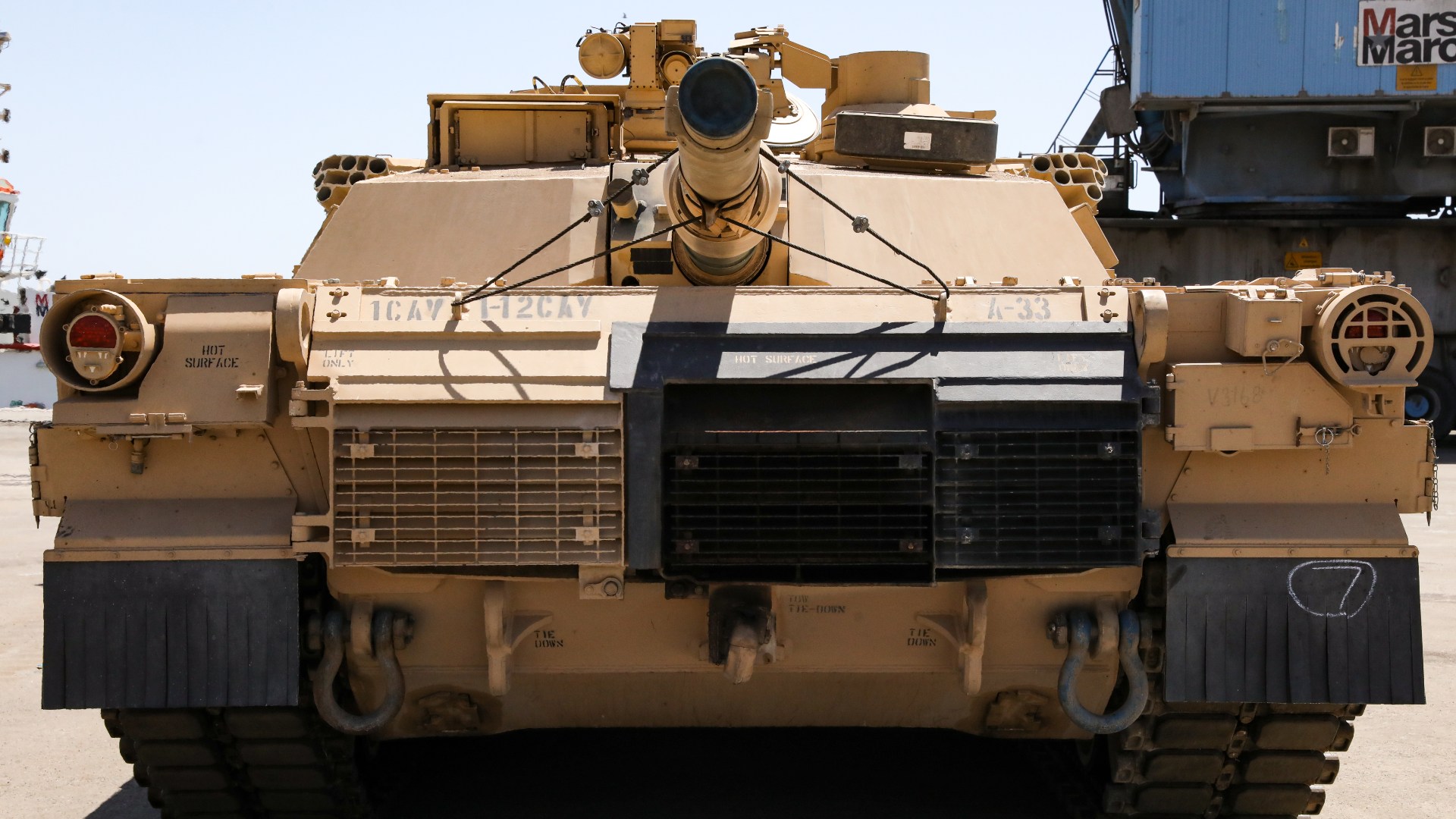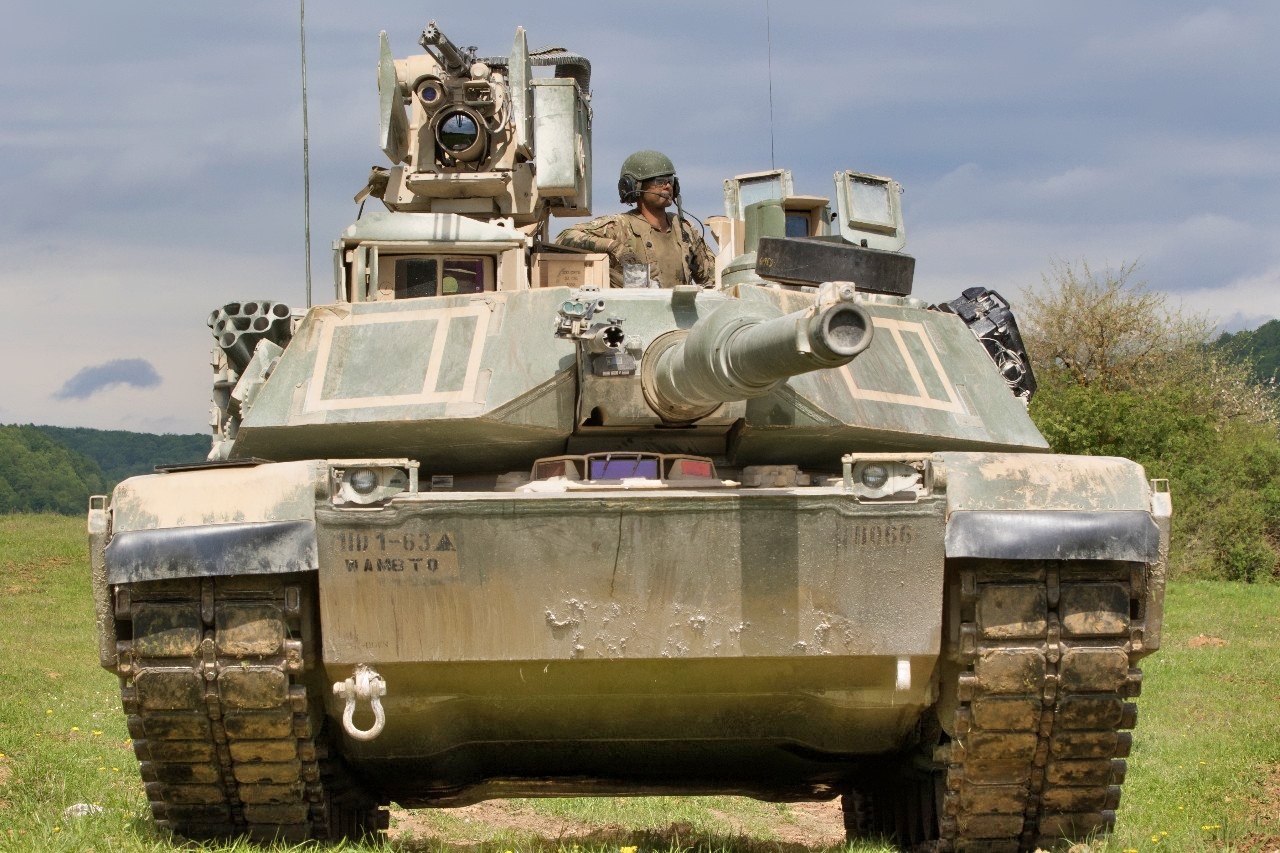Key Points and Summary – The U.S. is “unhappy” with Australia’s July 2025 deal to send 49 M1A1 Abrams tanks to Ukraine, despite having sent its own.
-The Trump administration’s “discontent” stems from multiple “concerns”: the tanks are a “liability” in a “drone war” (noting almost all 31 U.S.-donated Abrams have already been “destroyed”), they are “difficult to sustain,” and the deal “undercut” U.S. peace talks with Moscow.

A U.S. Army M1A3 Abrams Tank from the 1-12 Cavalry Squadron, 1st Cavalry Division waiting to be guided onto a loading vehicle and secured for transport at the Port of Agadir, June 3, 2022, Agadir, Morocco. African Lion 2022 is U.S. Africa Command’s largest, premier, joint, annual exercise hosted by Morocco, Ghana, Senegal and Tunisia, June 6 – 30. More than 7,500 participants from 28 nations and NATO train together with a focus on enhancing readiness for U.S. and partner nation forces. AL22 is a joint all-domain, multi-component and multinational exercise, employing a full array of mission capabilities with the goal to strengthen interoperability among participants and set the theater for strategic access. (U.S. Army photo by PFC Donald Franklin)
-The article notes the $160.6 million deal was also a “very convenient offloading ramp” for Australia’s “retired” M1A1s as it upgrades to the new M1A2 SEPv3.
Australia Sent 49 M1A1 Abrams to Ukraine. So, Why Is America Unhappy?
Simply put, the American-made (designed by Chrysler Defense; now built by General Dynamics Land Systems via the Lima Army Tank Plant) M1 Abrams is the most successful main battle tank (MBT) of all time. Indeed, the Abrams has been so successful that it has gained 10 foreign military sales (FMS) customers over the course of its prestigious 45-year history, namely Australia, Egypt, Iraq, Kuwait, Morocco, Poland, Saudi Arabia, South Korea, Taiwan, and Ukraine.
It is poetically apropos that Australia and Ukraine serve as the bookends of that alphabetical listing, as the former country recently sold 49 M1A1s to the latter country. But the United States is unhappy with this transaction, in spite of the fact that the US itself has directly provided multiple such tanks (along with a myriad of other weapons systems) to Ukraine in support of that former Soviet Republic’s fight for survival against Russian aggression.
So then, why the American displeasure with the Aussie-Ukrainian tank transaction?
The Basics of the Deal
The deal was announced on or about July 19, 2025, and is valued at approximately $245 million AUD ($160.6 million USD), is part of the $1.5 billion AUD ($980.55 million USD) in assistance Australia has committed to Ukraine since Vladimir Putin launched his so-called (and seemingly never-ending) “special military operation” back in February 2022.
An official press release from the office of the Australian Defense Ministers quoted the following Australian Government officials expressing their pleasure with the Abrams deal:
–Richard Marles, Deputy Prime Minister: “The M1A1 Abrams tanks will make a significant contribution to Ukraine’s ongoing fight against Russia’s illegal and immoral invasion … I was pleased to meet the Australian Army personnel who helped facilitate the delivery of these tanks from Australia to Ukraine…Australia remains steadfast in our support for Ukraine and seeing a just and lasting peace.”

An M1A2 Abrams tank from 1st Battalion, 63rd Armor Regiment, “Dragons,” 1st Infantry Division, Fort Riley, Kansas, pulls during Combined Resolve X at the Hohenfels Training Area, Germany, May 1, 2018. Exercise Combined Resolve X is a U.S. Army Europe exercise series held twice a year in southeastern Germany. The goal of Combined Resolve is to prepare forces in Europe to work together to promote stability and security in the region. (U.S. Army photo by Spc. Andrew McNeil / 22nd Mobile Public Affairs)
–Pat Conroy, Minister for Defence Industry: “Australia stands shoulder-to-shoulder with Ukraine … These modified M1A1 Abrams tanks will deliver more firepower and more mobility to the Ukrainian Armed Forces…They meet a direct request from the Ukrainian Government and form part of Australia’s unwavering commitment to protect the global rules-based order.”
It’s worth noting that the July 2025 date signifies a nine-month delay from when the tanks were initially pledged, due to logistical challenges and the need for approval from the U.S. for any third-party transfer of American-made military equipment.
Reasons for US Discontent on M1A1 Abrams Tanks
First and foremost, the Trump Administration’s displeasure with the deal boils down to concerns that the tanks will be more of a liability than an asset.
Although much has been written about the heavy losses that Russian tanks (such as the T-72) have sustained during 3.5 years of war, it should not be forgotten that Ukraine’s tank forces have taken a mauling too.
As great as the Abrams has been, it has even been showing weaknesses and vulnerabilities in the current conflict, particularly to drone attacks. Indeed, almost all of the 31 M1A1 SA tanks that the U.S. provided directly to Ukraine back in 2023 have been destroyed already.
(Ukraine’s German-made Leopard tanks aren’t faring much better; as of September 2024, according to Army Recognition, Ukraine had lost 43 Leopards, amounting to 20 percent of the initial supply. Total Ukrainian tank losses at the time that report was made amounted to 919.)
Indeed, notwithstanding the platitudes mentioned above expressed by Ministers Conroy and Marles, at least one anonymous Australian defense official has admitted to having misgivings: “We are starting to doubt if the Ukrainians actually want these vehicles. The tank roof is the weakest point of the Abrams, and this is a drone war.”
In addition, at the time of the deal, Washington was in the middle of negotiations with Moscow, and senior U.S. officials feared at the time that American-made tanks might undercut the peace talks.

A U.S. Army driver assigned to Alpha Company, 1st Battalion, 67th Armor Regiment, 3rd Brigade Combat Team, 1st Armored Division standbys in the drivers hull of an M1A2 SEPv2 Abrams waiting for further guidance prior to the start of Table VI Tank Gunnery at McGregor Range, New Mexico, Sept. 29, 2023. Gunnery Table VI evaluates crews on engaging stationary and moving targets while utilizing all weapons systems in offensive and defensive positions, ensuring our crews are trained and ready for any mission. (U.S. Army photo by Spc. David Poleski)
Moreover, it’s not just the Trump Administration personnel who had reservations about the transaction.
As one anonymous U.S. official told the Australian Broadcasting Corporation (ABC; not to be confused with America’s ABC News outlet), “Last year, even before Donald Trump returned as president, we warned the Australians that sending these Abrams tanks would be complicated, and once they finally get to the battlefield, the Ukrainians will find them difficult to sustain.”
A Matter of Convenience for the Aussies
It should also be noted that the M1A1 variant that the Aussies provided to the Ukrainians is *not* the top-of-the-line variant of the tank.
The latest & greatest version of the Abrams is the M1A2 SEPv3, which features upgrades such as Boron Carbide Ceramics and Titanium Support Framework; the latter attribute promotes structural integrity and weight reduction, indicating a focus on enhancing protective capabilities while managing overall weight (titanium is lighter than steel).
The Australian Army is already integrating the M1A2 SEPv3 into its arsenal and is accordingly retiring its M1A1 stocks; the sale to Ukraine provides a very convenient offloading ramp for these retired war machines.
About the Author: Christian D. Orr, Defense Expert
Christian D. Orr is a Senior Defense Editor. He is a former Air Force Security Forces officer, Federal law enforcement officer, and private military contractor (with assignments worked in Iraq, the United Arab Emirates, Kosovo, Japan, Germany, and the Pentagon). Chris holds a B.A. in International Relations from the University of Southern California (USC) and an M.A. in Intelligence Studies (concentration in Terrorism Studies) from American Military University (AMU). He is also the author of the newly published book “Five Decades of a Fabulous Firearm: Celebrating the 50th Anniversary of the Beretta 92 Pistol Series.”
More Military
China Might Have a Way to ‘Swarm’ U.S. Navy Aircraft Carriers
India Leases Russia’s ‘Stealth’ Nuclear Attack Submarines
The Mach 3 SR-71 Blackbird Deserves A Better Fate Than This
The F-14 Tomcat Fighter Was ‘Notoriously Difficult and Costly to Keep Operational’











Jim
November 9, 2025 at 1:13 pm
My guess, Australia wanted to make a splash to symbolize its commitment to the Ukrainian cause.
But as noted in the article the Abrams did not have a particularly big impact on the direction of the war when the U. S. sent Abrams to Ukraine.
How did Kiev use the Abrams tanks provided it?
Generally, in ones and twos as support for advancing troops (31 tanks on a front as long as this one is not a large number to begin with).
Abrams are heavy and in the Spring & Fall “deep mud” season they tended to get stuck in the mud or had to stay on roads so they wouldn’t get stuck.
Their maintenance is also difficult in the field.
Abrams were designed to act in large packs as part of big arrow advances (or to stop large opposing tank formations as was the stratagem at the Fulda Gap).
Abrams were designed for full-blown tank battles.
So, here, the numbers are slightly larger than the original U. S. contribution to Kiev, but we already have experience with the Abrams in Ukraine and it was less than ideal… actually, a failure… perhaps, Trump doesn’t want to see the Abrams fail, again.
Also, when the original Abrams went into service in Ukraine, the drone war was just starting, it’s much more advanced now, to the point each side tends not to rely on big armored vehicles, as they are spotted and then destroyed. And, Russia had put a “bounty” on Abrams with rewards for successfully destroying or capturing an Abrams.. the same thing will happen with these Aussie Abrams when they are used in Ukraine.
Abrams in ones and twos stick out like a sore thumb on the battlefield.
It seems to be a waste of useful military equipment.
But then again, this whole policy is turning out to be a waste of American taxpayer Dollars, so why shouldn’t Australia also sink their tax Dollars into the Ukrainian mud never to be seen again.
Par for the course, if you think about it.